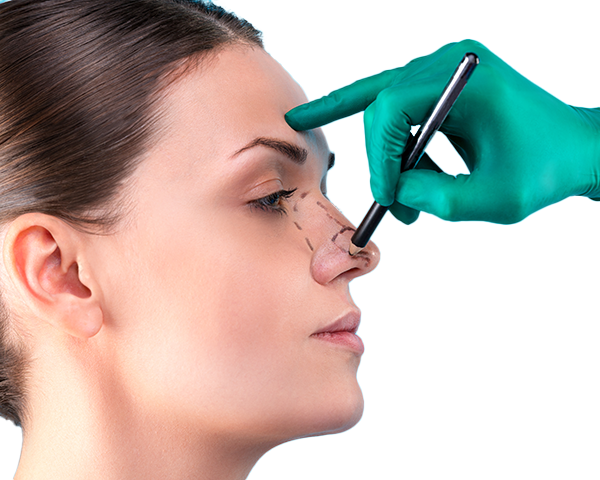
Rhinoplasty is one of the most common surgeries. Results can sometimes be different than expected. Here, factors belonging to the patient (skin, age, cartilage and bone structure), surgical technique can be effective.
In such cases, revision rhinoplasty, which we call the second correction, is performed.
What are the most common causes of revision rhinoplasty?
One of these is nasal congestion that continues after surgery. It can happen immediately after surgery or 1-2 years later.
Secondly, undesirable situations may occur in terms of appearance.
Persistence or subsequent occurrence of nasal hump, irregularities on the skin, drooping of the tip of the nose or being too upturned, and curvature in the nasal axis can be counted as the most common causes of revision.
These issues are categorized as minor and major issues. The approach to each is different.
What are the differences between revision rhinoplasty and the first surgery?
In the first operation, the internal and external structures of the nose were changed. Bone and cartilage structure has decreased, weakened and changed in size and shape.
In addition, hard tissue, not scar tissue, has formed in the nose.
The purpose of revision rhinoplasty is to correct problems both in appearance and function.
In revision rhinoplasty operation, additional cartilage will be needed to correct the problems. For this, first of all, the patient himself is preferred. Ear and rib cartilage are the most commonly used areas.
Or, human-derived rib cartilage, which is taken from outside the patient and processed under special conditions, which we call cadaver cartilage, is used.
Other issues to be aware of before making a revision surgery decision are:
Undesirable results such as scar tissue formation, numbness, infection, skin loss may occur in the second or third revisions.
Before making a revision decision, the waiting period should not be rushed and at least 1 year should have passed since the first surgery.
Planning should be done well, graft support should be determined, the patient’s own structural characteristics, skin structure, etc. should be taken into account.
The surgical approach in revision rhinoplasty is usually the open technique. Some minor problems can be solved with the closed technique as well.
What is the process after revision rhinoplasty?
There is a process similar to the first surgery. Depending on the condition of the intervention, an intranasal silicone splint can be an extranasal nasal splint. If bone intervention is not performed, swelling and bruising are almost nonexistent. Returning to normal activity after surgery is again an average of 1 week.
Other routine considerations after the surgery are the same as the first surgery.